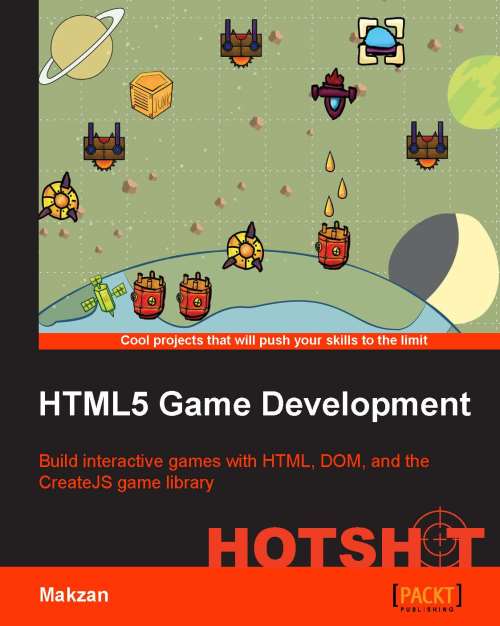
HTML5 has been widely adopted recently. It has become popular thanks to the widespread usage of modern web browsers in both desktops and mobile devices. The JavaScript and rendering performance has also improved. The nature of the web standards makes game development shine on web browsers.
A obvious advantages of HTML5 for games is that the games will work on any modern device. You do have to put extra thought into how your game will respond to various screen sizes and input types, and yes, you probably have to do a bit of platform specific coding (the main inhibitor being audio); but it’s far better than the alternative of completely porting the game per target.
In HTML5 Game Development Hotshot, the author demonstrates two common approaches on how to build an HTML5 game.
- Document Object Model (DOM) elements in combination with CSS.
- The canvas tag with the CreateJS library.
The new properties in CSS3 provide convenient and high performance animation and transform control. On the other hand, the canvas tag along with the CreateJS library provide solid game-object management.
The book goes through eight different projects that will enable us to build production-ready games and deploy them on a server to allow others to play them. It goes in depth into the thought process for choosing the right combination of technologies and techniques involved in game development for the Web.
The book has an interesting flow and builds up in complexity at a good pace.
Conclusion
Whether you are familiar with the basics of object-oriented programming concepts, new to HTML game development, or familiar with just Web designing, this project-based book will get you up and running in no time.
It will teach and inspire you to create great interactive content on the Web.
This book is a great compliment to my series on Game Development for the Web. You should go and grab a copy right now!